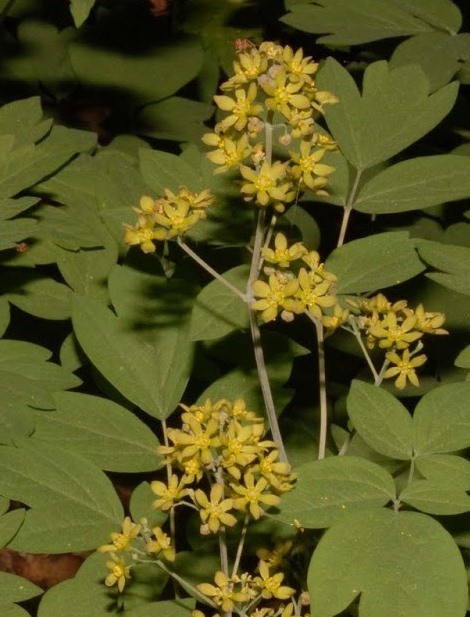Blue cohosh
(Caulophyllum robustum)

Description
Caulophyllum thalictroides, the blue cohosh, a species of Caulophyllum (family Berberidaceae) is a flowering plant in the Berberidaceae (barberry) family. It is a medium-tall perennial with blue berry-like fruits and bluish-green foliage. The name cohosh is probably from an Algonquian word meaning "rough". From the single stalk rising from the ground, there is a single, large, three-branched leaf plus a fruiting stalk. The bluish-green leaflets are tulip-shaped, entire at the base, but serrate at the tip. Its species name, thalictroides, comes from the similarity between the large highly divided, multiple-compound leaves of meadow-rue (Thalictrum) and those of blue cohosh. It is found in hardwood forests and favors moist coves and hillsides, generally in shady locations, in rich soil. It grows in eastern North America, from Manitoba and Oklahoma east to the Atlantic Ocean. Some bees visit the petals' nectar glands early in the season. The plant has been used as a medicinal herb by American Indians. Many Native American tribes, and later European herbologists and mid-wives,would use this herb in conjunction with other herbs and fluids for abortive and contraceptive purposes. The seeds have also reportedly been used a coffee substitute.
Taxonomic tree:







